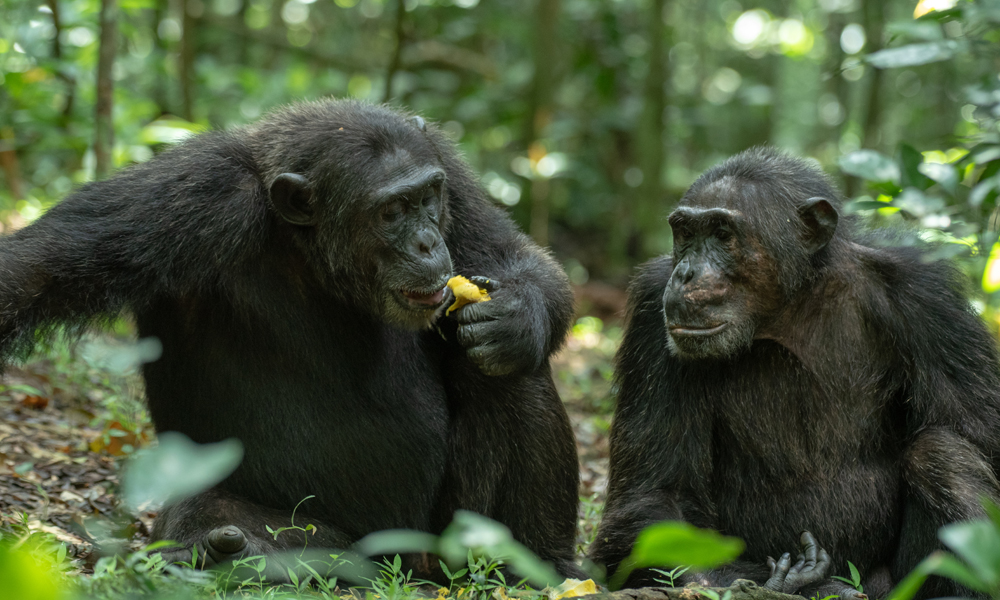Kibale Forest National Park is home to one of the last remaining tracts of tropical rain forests in Uganda. Known for its chimpanzee population, the park is located in the western part of the country and has the largest forest cover between Kamwenge and Kabarole district. Some of the trees in the park reach heights of 55 metres. Kibale Forest National Park was established in 1993 and occupies an area of roughly 795 square kilometres, at an elevation of 1160–2607 metres above sea level. The park’s surrounding surroundings, which are adorned with numerous crater lakes, are encircled by an ascending plateau.

The lush forest is home to 13 different species of primates, including black and white colobus monkeys, red-tailed monkeys, blue monkeys, red colobus monkeys, chimpanzees, white-cheeked monkeys, pottos, bush babies, dents mona monkeys, vervet monkeys, and olive baboons. The national park’s vegetation is made up of many different types of plants, trees, and swampy vegetation. Additionally, 350 different species of birds have been identified in the conservation area. The forest is home to African elephants, buffaloes, and gigantic forest hogs, all of which are present but infrequently sighted.
A popular activity in the national park is tracking chimpanzees. The experience starts at the park visitor centre in Kanyanchu, where a team from the Uganda Wildlife Authority will brief you on how to behave around primates and follow the rules. According to science, chimpanzees are the closest living relatives of humans, sharing up to 98% of our DNA. They are social, intelligent animals that can use tools like sticks to gather termites, and they are so loud that you can hear their call even from a distance. Experiencing primates up close is truly amazing.
The two periods of the activity take place in the morning and afternoon. The sound of the jungle is truly amazing, with birds and other primates like black and white colobus monkeys echoing through the leaves of the swinging trees. After meeting them, you will have an hour to talk and take pictures. Tracking takes two to three hours on foot. In addition to tracking chimpanzees, you can participate in the habituation process, which involves spending the most of the day tracking and gradually getting the primates used to having people around. A team of researchers will guide you through the procedure.
In order to monitor chimpanzees, you must obtain a chimpanzee tracking permission from the Uganda Wildlife Authority through your tour operator. These permits cost 200 USD for non-resident foreigners, 150 USD for residents of other countries, and 150,000 shillings for inhabitants of East Africa. The cost of the habituation process differs significantly from that of the tracking; it is $250 USD for non-resident foreigners, $200 USD for residents of other countries, and 200,000 Shillings for nationals of East Africa.
One of the nicest spots to visit in the national park is the Bigodi swamp. You may stroll through the forest and look for additional monkeys that you could have missed when tracking, as well as lovely butterfly species and park birds. Stop by the neighbourhood surrounding the park to see the women who live there showcasing their artistic creations, which include baskets and mats. The forest is a great place to go birdwatching year-round, but for the best chance of seeing chimpanzees, you should visit in the dry season when the trail is considerably drier and simpler to follow.
Road travel via the Kagadi villages leads to Kibale Forest National Park; it takes around five hours to get there. Air transportation can be made via Kampala, Kajjansi, or Entebbe. There are lodging options available that range from luxurious to the finest value.
